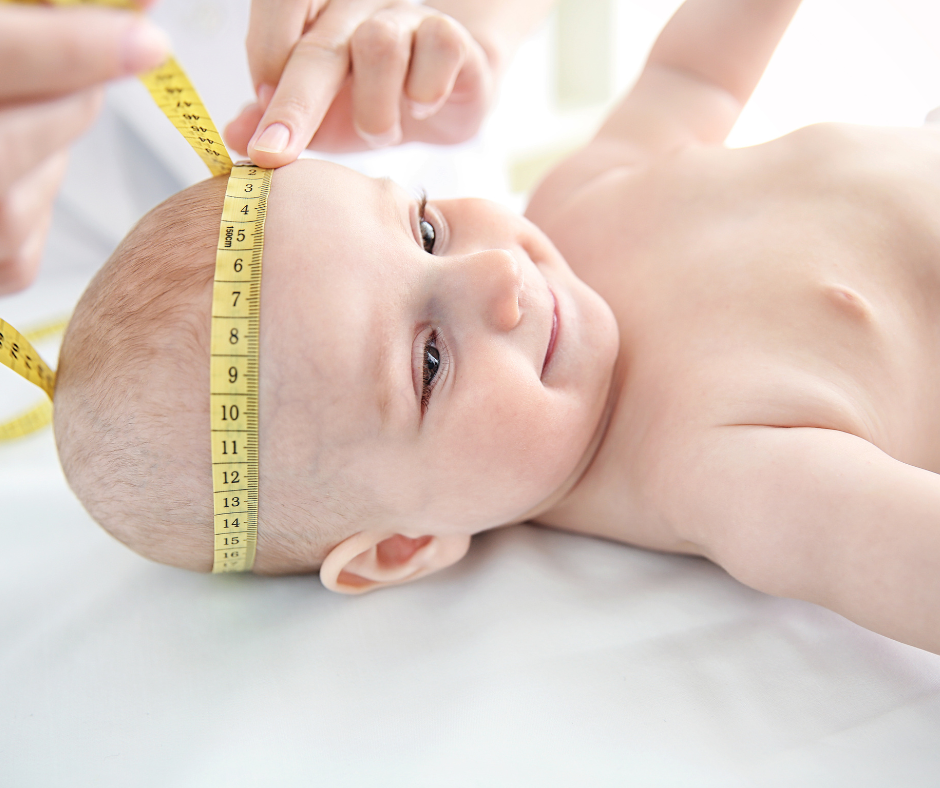
Authors: Mekka Garcia, MD, NYU Grossman School of Medicine
Alison L. Christy, MD, PhD, Providence Pediatric Neurology at St. Vincent Medical Center—Portland, Oregon
Reviewed: June 2022
SUMMARY
Hydrocephalus occurs when fluid builds up around the brain. It causes increased pressure inside the skull. This can result from brain differences present from birth (congenital). It can also result from differences that develop over time (acquired). The only current treatment is surgery.
JUMP TO
Disorder Overview
DESCRIPTION
Hydrocephalus is a major cause of disease and affects 85 out of 100,000 people worldwide.
The brain and spinal cord are surrounded by cerebrospinal fluid (CSF). This clear fluid protects the brain. CSF is constantly produced by a group of blood vessels. This group is called the choroid plexus. The fluid flows around the brain and spinal cord. It is then absorbed into the blood.
Four open spaces (ventricles) in the brain communicate with each other. They ensure proper CSF flow. If the flow of CSF is blocked, fluid will build up. This increases brain pressure.
Non-communicating hydrocephalus occurs when the flow is blocked before it exits the ventricles. Communicating hydrocephalus occurs when the flow of CSF is blocked after it exits the ventricles.

SIGNS AND SYMPTOMS
The signs and symptoms of hydrocephalus vary based on the patient’s age. Congenital hydrocephalus is present from birth or develops shortly after. Signs and symptoms may include:
- Macrocephaly. This term refers to a big head. It is particularly concerning if the head size increases dramatically over a short time.
- Irritability
- Nausea and/or vomiting
- Seizures. Electrical bursts in the brain can cause abnormal behavior.
- Delays in motor skills. Patients may have problems with crawling, sitting, walking, and eating.
Acquired hydrocephalus develops over time. This can happen at any age, even in adulthood. Signs and symptoms may include:
- Macrocephaly
- Headache
- Irritability
- Increased sleepiness or difficulty waking up
- Nausea and/or vomiting
- Changes in vision. Changes can include blurry vision or double vision.
- Motor abnormalities. These include difficulty with walking, balance, or coordination.
- Loss of bladder control
CAUSES
Congenital hydrocephalus is usually due to structural differences of the brain. These block normal flow of CSF. It can be caused by:
- Genetic disorders associated with birth defects
- Infection during pregnancy
- Complications from birth
Acquired hydrocephalus may be caused by:
- Brain tumors
- Infections that affect the central nervous system
- Trauma
- Strokes that cause bleeding in the brain

LABORATORY INVESTIGATIONS
Early diagnosis is key in preventing neurologic injury. To diagnose hydrocephalus, a doctor will use:
- A complete health history
- A physical exam
Other studies that can aid in diagnosis include:
Funduscopic exam.
Ultrasound.
Magnetic resonance imaging (MRI).
Computed tomography (CT).
Limited (fast or quick-brain) MRI.
Lumbar puncture.
Genetic testing.

TREATMENT AND THERAPIES
Hydrocephalus is treatable with surgery. There are two options:
- Ventriculoperitoneal shunt. A small catheter (tube) is placed in the ventricles. The tube extends through the body. It drains excess CSF to the abdomen.
- Endoscopic third ventriculostomy. A small hole is made in the third ventricle. This can allow improved CSF flow and reabsorption.
OUTLOOK
The life expectancy of people with hydrocephalus depends on a range of factors. These include its severity and other associated issues. Most people live to adulthood after surgery.
If hydrocephalus has caused damage to the brain, children may have developmental differences. They may walk or talk later. They may also have lifelong difficulties with movement and communication.
Some children experience developmental differences even when hydrocephalus is treated quickly. This is because of the underlying causes of hydrocephalus:
- A difference in the shape and structure of the brain
- Injury to the brain from infection or stroke
Both can affect development.
RELATED DISORDERS
- Chiari I malformation
- Dandy-Walker malformation
- Schizencephaly
- Cortical malformations
- Brain tumor
Resources
The Hydrocephalus Association’s mission is to find a cure for hydrocephalus and improve the lives of those impacted by the condition. Their vision is a world without hydrocephalus. The Hydrocephalus Association’s Community Networks, also known as support groups, provide localized support, education, and empowerment through the community. The network hosts educational events, support group meetings, and other gatherings that enable individuals and families to connect.
Pediatric Hydrocephalus Foundation
The mission of the Pediatric Hydrocephalus Foundation (PHF) is to educate the community by raising the level of awareness about this brain condition. PHF provides support to the families, friends, and children who are diagnosed with hydrocephalus. Working with medical professionals, and policy makers at the state and federal level, PHF advocates on behalf of the hydrocephalus community to push for more research, treatments, and search for a cure for hydrocephalus. Over half of the states in U.S. have PHF Facebook chapter groups. The list can be found on the PHF website.
Pediatric Epilepsy Surgery Alliance
The Pediatric Epilepsy Surgery Alliance (formerly known as The Brain Recovery Project) enhances the lives of children who need neurosurgery to treat medication-resistant epilepsy. They empower families with research, support services, and impactful programs before, during, and after surgery. PESA’s programs include research-based, reliable information to help parents and caregivers understand when a child’s seizures are drug-resistant; the risks and dangers of seizures; the pros and cons of the various neurosurgeries to treat epilepsy; the medical, cognitive, and behavioral challenges a child may have throughout life; school, financial aid, and life care issues. PESA’s resources include a comprehensive website with downloadable guides, pre-recorded webinars, and virtual workshops; an informative YouTube channel with comprehensive information about epilepsy surgery and its effects; a private Facebook group (Education After Pediatric Epilepsy Surgery) with over 300 members; Power Hour (bi-monthly open forums and live virtual workshops on various topics); and free school training to help your child’s education team understand the impact of their epilepsy surgery in school. Their Peer Support Program will connect you with a parent who has been there. The Pediatric Epilepsy Surgery Alliance also hosts biennial family conferences and regional events that allow families to learn from experts, connect with other families, and form lifelong friendships. They also provide a travel scholarship of up to $1,000 to families in need to fund travel to a level 4 epilepsy center for a surgical evaluation.
In addition, PESA has resources for medical professionals to assist in helping clinicians help the parents of their patients find the resources they need after surgery. Educators and therapists will also find helpful resources and information, including videos, guides, and relevant research. Patients who have undergone surgery are encouraged to register with the Global Pediatric Epilepsy Surgery Registry to help set future research priorities.

Child Neurology Foundation (CNF) solicits resources from the community to be included on this webpage through an application process. CNF reserves the right to remove entities at any time if information is deemed inappropriate or inconsistent with the mission, vision, and values of CNF.
Research
ClinicalTrials.gov for Hydrocephalus. (birth to 17 years).
These are clinical trials that are recruiting or will be recruiting. Updates are made daily, so you are encouraged to check back frequently.
ClinicalTrials.gov is a database of privately and publicly funded clinical studies conducted around the world. This is a resource provided by the U.S. National Library of Medicine (NLM), which is an institute within the National Institutes of Health (NIH). Listing a study does not mean it has been evaluated by the U.S. Federal Government. Please read the NLM disclaimer for details.
Before participating in a study, you are encouraged to talk to your health care provider and learn about the risks and potential benefits.
Family Stories
Read stories of people living with hydrocephalus on the Hydrocephalus Association’s Stories from Our Community page. These amazing individuals are living life to the fullest regardless of the challenges their condition brings.
Pediatric Hydrocephalus Foundation features an “Our Kids” section which highlights stories of the brave boys and girls living with hydrocephalus.
The information in the CNF Child Neurology Disorder Directory is not intended to provide diagnosis, treatment, or medical advice and should not be considered a substitute for advice from a healthcare professional. Content provided is for informational purposes only. CNF is not responsible for actions taken based on the information included on this webpage. Please consult with a physician or other healthcare professional regarding any medical or health related diagnosis or treatment options.
References
Shuer LM, Thakkar R. Hydrocephalus [Internet]. Rolling Meadows, IL: American Association of Neurological Surgeons. 2022. Available from: https://www.aans.org/en/Patients/Neurosurgical-Conditions-and-Treatments/Hydrocephalus
Isaacs AM, Riva-Cambrin J, Yavin D, Hockley A, Pringsheim TM, Jette N, Lethebe BC, Lowerison M, Dronyk J, Hamilton MG. Age-specific global epidemiology of hydrocephalus: Systematic review, metanalysis and global birth surveillance. PLoS One. 2018 Oct 1;13(10):e0204926. https://doi.org/10.1371/journal.pone.0204926. Erratum in: PLoS One. 2019 Jan 10;14(1):e0210851. PMID: 30273390; PMCID: PMC6166961.
Kahle KT, Kulkarni AV, Limbrick DD Jr, and Warf BC. Hydrocephalus in children. The Lancet. 2016 Feb 20;387(10020):788-99. https://doi.org/10.1016/S0140-6736(15)60694-8
National Health System. Overview: Hydrocephalus [Internet]. National Health System. 2020. Available from: https://www.nhs.uk/conditions/hydrocephalus/
National Institute of Neurological Disorders and Stroke. Hydrocephalus Fact Sheet [Internet]. Bethesda, MD: National Institutes of Health. 2020. Available from: https://www.ninds.nih.gov/Disorders/Patient-Caregiver-Education/Fact-Sheets/Hydrocephalus-Fact-Sheet
Tully HM, Dobyns WB. Infantile hydrocephalus: a review of epidemiology, classification and causes. Eur J Med Genet. 2014 Aug;57(8):359-68. https://doi.org/10.1016/j.ejmg.2014.06.002. Epub 2014 Jun 13. PMID: 24932902; PMCID: PMC4334358.
